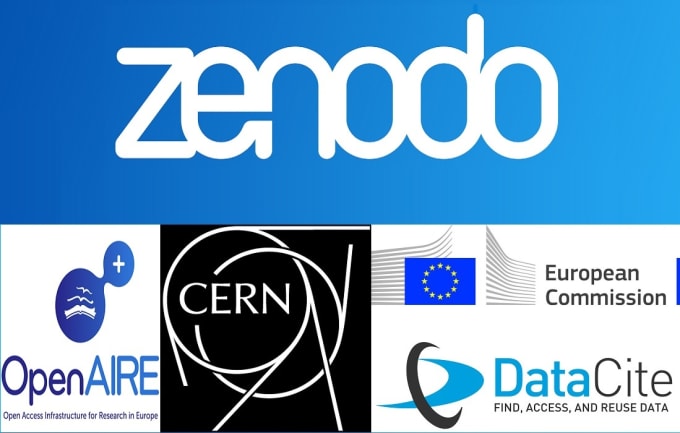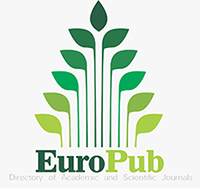Mild COVID-19 Does Not Reduce the Risk of Developing Pulmonary Fibrosis
Mild COVID-19 may also causes pulmonary fibrosis
DOI:
https://doi.org/10.5281/zenodo.10018077Keywords:
COVID-19, Convalescent plasma, Dickkopf-related protein 3, Pulmonary fibrosisAbstract
Aim: The medical world has experienced the administration of Coronavirus Disease of 2019 (COVID-19)-induced organ dysfunctions, particularly pulmonary. Dickkopf-related protein 3 (DKK3) is attributed to fibrosis in the human body. Our study aimed to evaluate DKK3 levels during COVID-19 infection and to locate a link between high levels of DKK3 and pulmonary fibrosis.
Materials and Methods: This prospective case-control study was conducted with COVID-19 patients and an age-gender-matched control group. Both groups were subjected to blood DKK3 measurements. Then, the sixth month after recovery, the patient group was reevaluated for pulmonary fibrosis via high-resolution computed tomography.
Results: Totally, 100 patients with COVID-19 and 100 controls participated. All patients were identified as non-severe and severe. DKK3 levels were significantly higher in the patient group than in the control group (p = 0.001). DKK3 levels were higher in the non-severe group. Patients healed with a convalescent plasma (CP) based-treatment produced more DKK3. Pulmonary fibrosis (PF) was more frequent in these patients. Basal lobe involvements but prominently the right middle lobe involvement were linked to fibrosis with a higher level of DKK3.
Conclusion: DKK3 may be a supportive marker for detecting COVID-19 positivity or COVID-19-induced PF. Comprehension of PF in patients with a CP-based treatment would be more complicated.
Downloads
References
Lewis KL, Helgeson SA, Tatari MM, Mallea JM, Baig HZ, Patel NM. COVID-19 and the effects on pulmonary function following infection: A retrospective analysis. EClinicalMedicine 2021;39:101079.
Das KM, Lee EY, Singh R, et al. Follow-up chest radiographic findings in patients with MERS-CoV after recovery. Indian J Radiol Imaging 2017;27(3):342-9.
Hui DS, Wong KT, Ko FW, et al. The 1-year impact of severe acute respiratory syndrome on pulmonary function, exercise capacity, and quality of life in a cohort of survivors. Chest 2005;128(4):2247-61.
Hanidziar D, Robson SC. Hyperoxia and modulation of pulmonary vascular and immune responses in COVID-19. Am J Physiol Lung Cell Mol Physiol 2021;320(1):L12-L6.
Stegelmeier AA, van Vloten JP, Mould RC, et al. Myeloid Cells during Viral Infections and Inflammation. Viruses 2019;11(2).
Nikitina E, Larionova I, Choinzonov E, Kzhyshkowska J. Monocytes and Macrophages as Viral Targets and Reservoirs. Int J Mol Sci 2018;19(9).
Crisan-Dabija R, Pavel CA, Popa IV, Tarus A, Burlacu A. "A Chain Only as Strong as Its Weakest Link": An Up-to-Date Literature Review on the Bidirectional Interaction of Pulmonary Fibrosis and COVID-19. J Proteome Res 2020;19(11):4327-38.
Blavier L, Lazaryev A, Dorey F, Shackleford GM, DeClerck YA. Matrix metalloproteinases play an active role in Wnt1-induced mammary tumorigenesis. Cancer Res 2006;66(5):2691-9.
Valenta T, Hausmann G, Basler K. The many faces and functions of beta-catenin. EMBO J 2012;31(12):2714-36.
Choi EY, Park HH, Kim H, et al. Wnt5a and Wnt11 as acute respiratory distress syndrome biomarkers for severe acute respiratory syndrome coronavirus 2 patients. Eur Respir J 2020;56(5).
Niehrs C. Function and biological roles of the Dickkopf family of Wnt modulators. Oncogene 2006;25(57):7469-81.
Veeck J, Bektas N, Hartmann A, et al. Wnt signalling in human breast cancer: expression of the putative Wnt inhibitor Dickkopf-3 (DKK3) is frequently suppressed by promoter hypermethylation in mammary tumours. Breast Cancer Res 2008;10(5):R82.
Zhu Y, Demidov ON, Goh AM, Virshup DM, Lane DP, Bulavin DV. Phosphatase WIP1 regulates adult neurogenesis and WNT signaling during aging. J Clin Invest 2014;124(7):3263-73.
Federico G, Meister M, Mathow D, et al. Tubular Dickkopf-3 promotes the development of renal atrophy and fibrosis. JCI Insight 2016;1(1):e84916.
Clinical spectrum of COVID-19. USA: [Updated 02.02.2023; Cited 29.03.2023] Avaible from : https://www.covid19treatmentguidelines.nih.gov/overview/clinical-spectrum/
Pan F, Ye T, Sun P, et al. Time Course of Lung Changes at Chest CT during Recovery from Coronavirus Disease 2019 (COVID-19). Radiology 2020 Jun;295(3):715-721.
Nguyen Y, Corre F, Honsel V, et al. Applicability of the CURB-65 pneumonia severity score for outpatient treatment of COVID-19. J Infect 2020;81(3):e96-e8.
Zewinger S, Rauen T, Rudnicki M, et al. Dickkopf-3 (DKK3) in Urine Identifies Patients with Short-Term Risk of eGFR Loss. J Am Soc Nephrol 2018;29(11):2722-33.
Lipphardt M, Dihazi H, Jeon NL, et al. Dickkopf-3 in aberrant endothelial secretome triggers renal fibroblast activation and endothelial-mesenchymal transition. Nephrol Dial Transplant 2019;34(1):49-62.
Katoh M. Multilayered prevention and treatment of chronic inflammation, organ fibrosis and cancer associated with canonical WNT/betacatenin signaling activation (Review). Int J Mol Med 2018;42(2):713-25.
Vallee A, Lecarpentier Y, Vallee JN. Interplay of Opposing Effects of the WNT/beta-Catenin Pathway and PPARgamma and Implications for SARS-CoV2 Treatment. Front Immunol 2021;12:666693.
Newman DR, Sills WS, Hanrahan K, et al. Expression of WNT5A in Idiopathic Pulmonary Fibrosis and Its Control by TGF-beta and WNT7B in Human Lung Fibroblasts. J Histochem Cytochem 2016;64(2):99-111.
Downloads
Published
How to Cite
Issue
Section
License
Copyright (c) 2023 Chronicles of Precision Medical Researchers

This work is licensed under a Creative Commons Attribution-NonCommercial-ShareAlike 4.0 International License.





